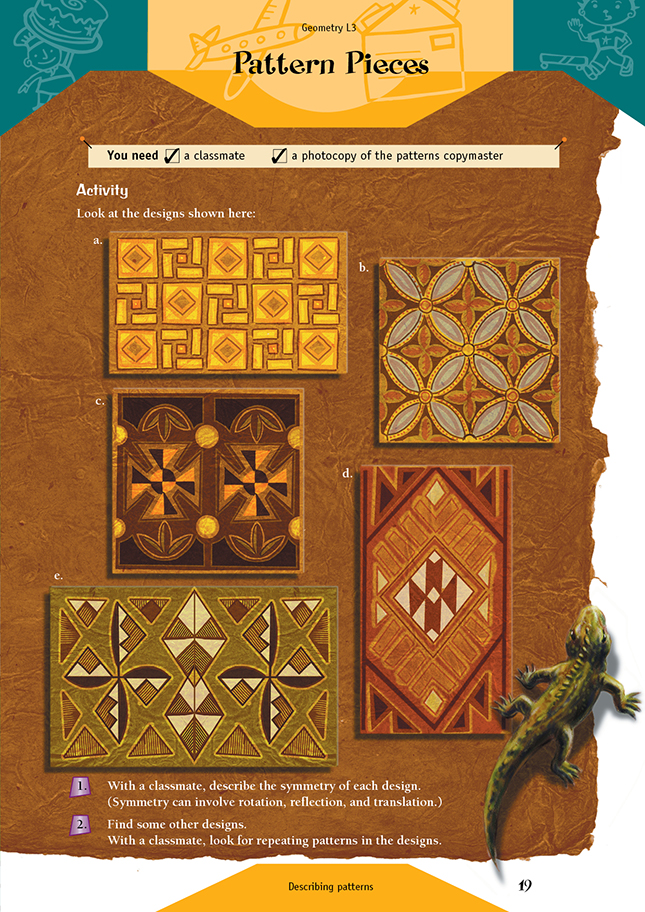This is a Level 3 Geometry activity from the Figure It Out Series.
A PDF of the student activity is included.
Click on the image to enlarge it. Click again to close. Download PDF (144 KB)
- Describing the symmetry of patterns.
- Pattern Pieces copymaster
- FIO, Level 3, Geometry, Pattern Pieces, page 19
Students need to understand what reflection, rotation, and translation are. Students may need to reflect/flip, rotate, and translate simple shapes in order to visualise what is happening. Foam shapes, cut-out shapes, and/or mirrors will help students to do this.
A reflection is a flip:
A rotation is when an object is turned about a fixed point called the centre of rotation. The order of rotational symmetry is the number of times a shape matches itself exactly during one complete turn. (See notes for page 4.)
A translation is when a shape slides without turning. This can be to the right, to the left, up, or down. The shape does not change its size and still faces in the same direction.
- A translates to B three grids to the right.
- A translates to C up three grids.
- A translates to D up three grids on the diagonal.
The activity on this page focuses on the symmetry of each design. As an extension, you could encourage students to also look for symmetry within each design
Answers to Activity
- a. The symmetry of this design involves rotation, for example:
(This part of the design has rotational symmetry of order 4. This means that it will fit onto itself 4 times before returning to the start position A.) b. This design has reflectional and rotational symmetry and involves translation.
c. This design has rotational symmetry and involves translation.
d. This design has reflectional and rotational symmetry.
e. This design has reflectional symmetry. (Reflection also occurs within the pattern, for example, in individual triangles.)
- Practical activity
